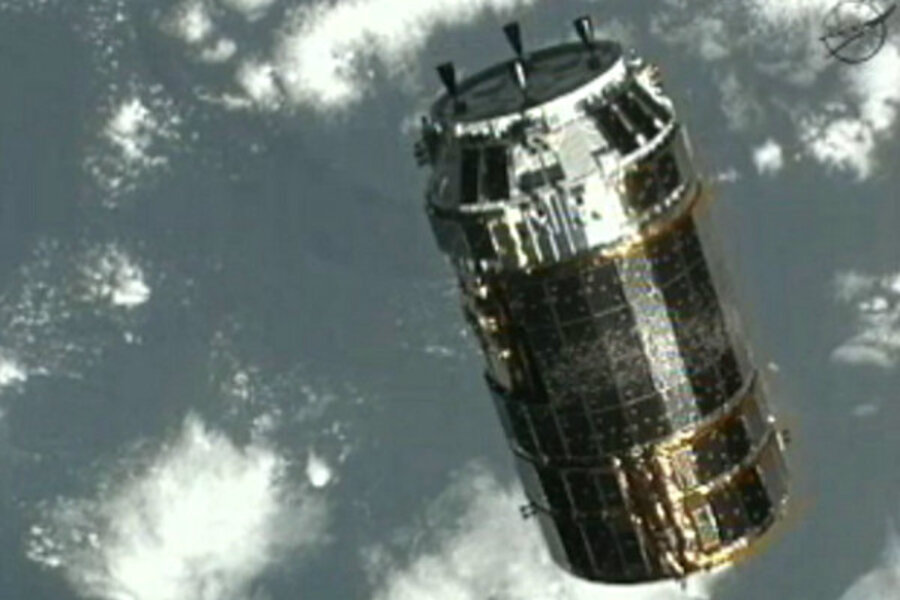Japanese spacecraft docks with Space Station
Loading...
The HTV-3 Japanese cargo spacecraft was successfully captured with the International Space Station’s Canadarm 2 robotic arm, and then installed to a docking port. JAXA astronaut Aki Hoshide berthed the HTV supply ship, called Kounotori3, or “white stork,” at 14:19 GMT (10:19 EDT) on July 27, 2012 to the Earth-facing side of the Harmony node on the ISS.
Below is a timelapse of the capture and berthing provided by SpaceVids.
Earlier, working from the robotic workstation inside the station’s cupola, NASA Flight Engineer Joe Acaba, with the assistance of Hoshide, captured the 16.5-ton cargo ship with the station’s Canadian Space Agency-provided robotic arm, and as the spacecraft flew within about 12 meters (40 feet) of the ISS.
The unmanned cargo ship is 10 meters (33 feet) long and 4 meters (13 feet) in diameter and is capable of delivering both internal and external supplies and hardware to the station.
The name Kounotori was chosen because it the ship’s arrival represents an important delivery. The space station crew later opened the hatches and began the process of removing about 3,175 kg (7,000 pounds) of supplies from inside the Kounotori3’s Pressurized Logistics Carrier. That cargo includes food and clothing for the astronauts, an aquatic habitat experiment, a remote-controlled Earth-observation camera for environmental studies, a catalytic reactor for the station’s water regeneration system and a Japanese cooling water recirculation pump.
Kounotori3’s Unpressurized Logistics Carrier is carrying more than 1,000 pounds of cargo to be attached to an experiment platform at the end of the Kibo module on August 6.
Kounotori3 launched from the Tanegashima Space Center in southern Japan on July 21. It will stay attached to the ISS until September 6 when, like its predecessors, it will be detached from the Harmony node by Canadarm2 and released for a fiery re-entry over the Pacific Ocean. The outer hull of the spacecraft is fitted with monitors to provide data about its re-entry.
Nancy Atkinson is Universe Today's Senior Editor. She also is the host of the NASA Lunar Science Institute podcast and works with the Astronomy Cast and 365 Days of Astronomy podcasts. Nancy is also a NASA/JPL Solar System Ambassador.
Connect with Nancy on Facebook | Twitter | Google + | Website





